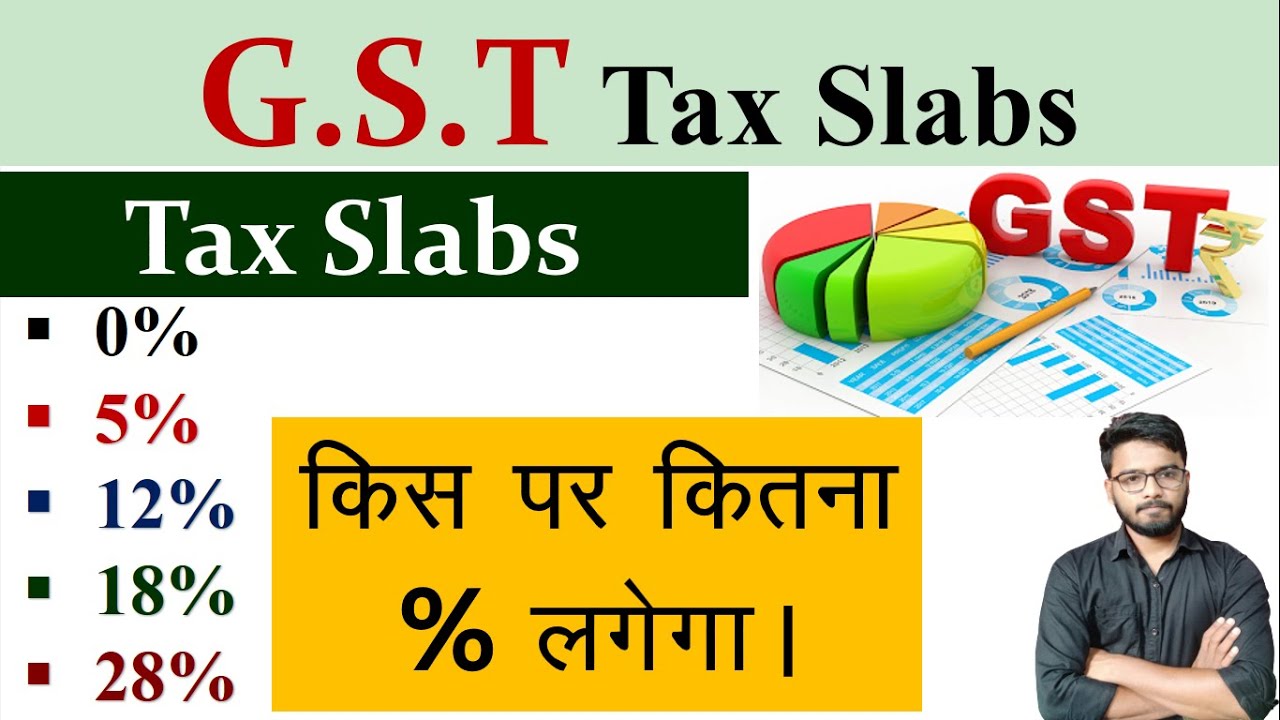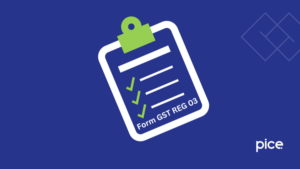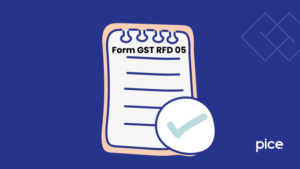Know All About GST Rates 2024 in India
- 20 Aug 24
- 25 mins

Know All About GST Rates 2024 in India
- The GST Rates in India for 2024 (Old vs New)
- How Many Types of GST Slab Rates Are There in India?
- Decrease in the GST Rates
- HSN and SAC System
- HSN System
- SAC System
- importance of HSN and SAC in GST Compliance
- Highlights of the 52nd GST Council Meeting
- Highlights of the 51st GST Council Meeting
- Revision of GST Rates announced in the 50th GST Council Meeting
- Revision of GST Rates announced in the 48th GST Council Meeting
- Import of goods and services
- Zero-rated supplies and exports of goods and services
- Input tax credit (ITC)
- Conclusion
Key Takeaways
- GST rates in India are categorized into four primary slabs: 5%, 12%, 18%, and 28%.
- Mobile phones and laptops attract a uniform GST rate of 18% across India.
- The GST Council, comprising the Union Finance Minister and State Finance Ministers, decides GST rates.
- Cement is taxed at the highest GST slab rate of 28% due to its classification as a luxury building material.
- All registered businesses under GST must charge GST on their sales and can claim input tax credits on their purchases.
The GST rates in India for 2024 have undergone certain revisions to adapt to economic and market changes. The modifications aim to optimize the tax structure for enhanced growth and fairness across different sectors.
The GST Rates in India for 2024 (Old vs New)

| Category | Old Rate | New Rate | Change Reason |
|---|---|---|---|
| Essential Goods (e.g., basic food items) | 0% | 0% | No change; continues to support affordability for essentials. |
| Standard Necessities (e.g., clothing, footwear under a certain price) | 5% | 5% | No change; maintains low rate for basic consumer items. |
| Processed Food and Pharmaceuticals | 12% | 12% | No change; aimed at maintaining moderate pricing for essential consumption. |
| Computers and Mobile Phones | 18% | 12% | Reduced to encourage digital literacy and make technology more accessible. |
| Dining Out | 18% | 12% | Reduced to support the hospitality sector post-pandemic recovery. |
| Luxury Goods (e.g., high-end motorcycles, luxury watches) | 28% | 30% | Increased to align with luxury consumption tax policies. |
| Cement | 28% | 18% | Decreased to boost the construction sector and housing development. |
| Electronic Vehicles | 12% | 5% | Reduced to promote eco-friendly transportation options. |
| Cigarettes and Tobacco | 28% + Cess | 28% + Increased Cess | Increased cess to discourage consumption and address health concerns. |
Analysis of Changes
- Reductions in Certain Categories: Significant reductions in GST rates for items like electronic vehicles and dining out aim to boost consumer spending in these sectors and promote eco-friendly alternatives. The reduction in GST rates on computers and mobile phones is intended to make technology more affordable, thus facilitating broader access and enhancing digital inclusion.
- Increases in Luxury Goods: The increase in GST rates for luxury goods is consistent with the government's approach to taxing luxury consumption at higher rates. This not only helps in managing income inequality but also in generating more tax revenue from non-essential high-value consumption.
- Sector-Specific Stimulus: The reduction in GST for cement is a targeted measure to stimulate the construction and real estate sectors, which are vital for employment and overall economic growth.
Impact of Rate Changes
These adjustments in GST rates for 2024 are strategically chosen to strike a balance between stimulating economic growth, managing inflation, and achieving fiscal targets. Rate reductions in technology and essential services aim to make these more accessible to the average consumer, while increases in luxury items reflect a policy of taxing higher where affordability is less of an issue.
This restructuring also reflects the government's ongoing commitment to tweaking the GST framework in response to economic conditions, sectoral needs, and public welfare objectives.
How Many Types of GST Slab Rates Are There in India?
In India, the GST (Goods and Services Tax) system is designed with a multi-slab rate structure to accommodate the diverse range of products and services in the economy. This structure aims to ensure that essential goods and services are made affordable for all, while luxury items are taxed at higher rates. Here's an overview of the different types of GST slab rates in India:
Types of GST Slab Rates
- 0% GST Rate
Description: Also known as the 'Nil' rate, it applies to essential commodities that are fundamental for basic survival and health.
Items Included: Basic food products (fresh fruits, vegetables, milk, bread), educational services, and printed books.
- 5% GST Rate
Description: This rate is applied to goods and services that are essential but not basic necessities.
Items Included: Packaged food items, apparel below a certain value, footwear below a certain threshold, household necessities like coal and kerosene.
- 12% GST Rate
Description: This slab is designated for goods that are regularly used but are not considered essential or luxurious.
Items Included: Butter, cheese, ghee, mobile phones, and processed food.
- 18% GST Rate
Description: This is one of the standard rates and applies to goods and services that do not fit into the lower or highest tax slabs.
Items Included: Biscuits, pastries, cakes, mineral water, cameras, speakers, and financial services.
- 28% GST Rate
Description: The highest GST rate slab, reserved for luxury items and those considered to be non-essential or 'sin' goods.
Items Included: Luxury cars, aerated drinks, cigarettes, and certain appliances like air conditioners and dishwashers.
- Additional Cess
Above 28% Rate: On top of the highest GST rate, certain luxury and sin goods also attract an additional cess. This cess is imposed to collect extra revenue on high-end goods and to discourage the consumption of unhealthy products.
Items Included: Tobacco products, luxury automobiles, and carbonated beverages.
- Special Rates
Precious Metals: GST on precious metals like gold, silver, and platinum is pegged at a special rate, typically around 3%, which is separate from the regular slabs.
This multi-slab structure allows the government to apply a higher tax on luxury consumption while keeping essential goods more affordable. It also helps in addressing socio-economic objectives by minimizing the tax burden on lower-income groups while maximizing revenue from those who can afford to pay more.
Decrease in the GST Rates

The GST (Goods and Services Tax) rates in India have been periodically adjusted since the system's implementation in 2017. These adjustments are aimed at refining the tax structure for better economic management, addressing sector-specific needs, and maintaining a balance between revenue generation for the government and affordability for consumers.
Overview of GST Rate Changes
- GST Tax Rate Adjustments
- Nominal Rates: The GST Council periodically reviews nominal GST rates to ensure they remain aligned with economic conditions and policy goals. Rate adjustments are typically made to stimulate growth in various sectors, manage inflation, and adjust for international trade dynamics.
- Rate Revisions: Regular revisions in GST rates reflect responses to feedback from various industries and consumers. These revisions aim to optimize the tax structure, address anomalies, and improve the ease of doing business.
- Impact on Service Providers and Businesses
- Service Providers: Decreases in GST rates for services can increase demand by making services more affordable to consumers. This is particularly significant in sectors like hospitality, education, and IT services.
- Businesses: Reductions in GST rates can lower the cost of raw materials and increase profitability. This is especially beneficial for manufacturers and traders dealing with goods like electronics, textiles, and consumer durables.
- Specific Rate Changes
- GST Rate List: The list of items under each GST slab is regularly updated to reflect these changes. For example, the rate of laptop use might be reduced to promote digital literacy and accessibility.
- Restaurant Services: Adjustments in GST rates for restaurant services aim to support the food and beverage industry, which is highly sensitive to price changes affecting consumer behavior.
- Procedural Aspects
- Input Tax Credit (ITC): A key feature of GST is the Input Tax Credit, which allows businesses to claim credit for the tax paid on inputs used in the production or delivery of goods and services. The procedure for ITC availment is crucial for businesses to effectively manage their tax liabilities.
Key Features in GST Rate Management
- Zero-rated Supplies/Export of Goods and Services: Goods and services meant for export are zero-rated, meaning exporters can claim refunds on taxes paid on inputs, which helps in maintaining competitiveness in international markets.
- Import of Goods and Services: GST on imports equates the tax burden on imported goods with domestically produced goods, aiming to create a level playing field and protect domestic industries.
- Supply of Service: Understanding the applicable GST rates for different types of services is crucial for service providers to comply with tax regulations and optimize their pricing strategies.
HSN and SAC System
The Harmonized System of Nomenclature (HSN) and the Service Accounting Code (SAC) are integral components of the Goods and Services Tax (GST) framework, both crucial for categorizing goods and services, respectively. This systematization assists in the consistent application of GST rates across different sectors and simplifies international trade and domestic tax compliance.
HSN System

The World Customs Organization (WCO) developed the HSN system, which is a widely accepted standard for classifying goods in international trade. It is structured as a six-digit code that systematically identifies products, which are categorized based on a hierarchical structure that classifies and defines commodities.
- First Two Digits: These represent the chapter in which the good is categorized and provide a rough indication of the commodity's nature.
- Next Two Digits: These provide further detail about the good, specifying the heading within the broader chapter.
- Last Two Digits: These are even more specific, detailing the sub-heading under which the good is classified.
For example, under the HSN code, the classification of 'coffee' would be broken down into its respective chapter, heading, and sub-heading, reflecting various aspects such as whether it is roasted or unroasted.
SAC System
While the HSN is used for goods, the SAC system is employed for the classification of services under the GST regime. It uses a similar coding structure but is specifically tailored to categorize services. This system ensures that services are uniformly classified across India, facilitating the appropriate levy of GST on various services.
- Structure: Like HSN, the SAC is a numeric system, but it starts with a set of digits unique to services, making it easy to distinguish between goods and services.
- Use: The SAC is used to categorize all types of services, providing clarity on the application of tax, especially in cases where businesses offer both goods and services.
For example, services such as consulting might have a specific SAC code that differs from other professional services like legal or accounting, helping businesses to apply the correct GST rate.
importance of HSN and SAC in GST Compliance
- Simplification of Tax Compliance: By standardizing the classification of goods and services, the HSN and SAC systems simplify the process of GST filing for businesses. It reduces errors in tax filing and helps in the seamless processing of tax returns.
- Facilitation of International Trade: The use of the HSN system aligns India's trade processes with international norms, facilitating smoother import and export activities.
- Uniformity in Tax Rates: These coding systems help ensure that GST rates are applied uniformly across similar goods and services throughout the country, regardless of where they are sold or provided.
Both the HSN and SAC systems are fundamental to ensuring efficient, accurate, and easy compliance with GST obligations, thereby supporting the broader goals of the GST system to enhance the ease of doing business and rationalize the tax environment in India.
Highlights of the 52nd GST Council Meeting
The 52nd GST Council Meeting brought significant decisions impacting various sectors and the overall GST framework:
- Rationalization of GST Rates: The council reviewed the existing GST rates, resulting in adjustments to ensure economic growth and fairness. Specific attention was given to essential goods, where rates were reduced to lessen the burden on consumers.
- Simplification of Compliance Procedures: Efforts to streamline GST filings were emphasized, including enhancements to the GSTN portal to aid businesses in easier compliance and quicker refunds.
- Focus on Digital Infrastructure: The meeting addressed the need for better digital tools to support GST compliance, including updates to e-invoicing systems and digital payment frameworks.
Related GST Topics
- GST on Mutual Funds: The management fees associated with mutual funds are subject to GST, typically at the rate of 18%.
- Business Class Air Tickets: GST for business class air travel is higher, usually around 12%, compared to economy class.
- International Trade and Customs Duties: Adjustments in GST rates also affect customs tariffs, ensuring that international trade operations are aligned with domestic tax policies.
- Threshold Limits for GST Registration: These limits determine who must register for GST, which is crucial for small businesses and startups.
- GST on Food Products: Items like frozen meat products have specific GST rates intended to balance affordability with revenue needs.
- Applicable Rates for Various Goods and Services: Detailed lists of GST rates are maintained, covering everything from industrial intermediaries to luxury goods and entertainment options like movie tickets.
Technical and Procedural Aspects under GST
- HSN and SAC Codes: Essential for categorizing goods and services correctly under the GST system, ensuring businesses apply the correct tax rates.
- E-Way Bill System: Critical for the transport of goods within India, where the value exceeds a specified threshold, facilitating tax compliance and logistics management.
- GST Forms and Filing Requirements: Businesses must comply with various forms like GSTR-1, GSTR-2B, and GSTR-3B, which are crucial for tax filing and compliance.
- Input Tax Credit (ITC): A mechanism that allows businesses to reduce their GST liability by the amount of GST paid on purchases is essential for improving cash flow and reducing overall business costs.
Compliance and Enforcement
- Time Limits and Penalties: Strict deadlines for GST filings and the consequences of late compliance are stipulated to ensure timely tax collection and compliance.
- Customs Law and International Trade: GST's impact on customs duties and valuation affects how businesses engage in international trade, influencing everything from pricing strategies to market competitiveness.
Highlights of the 51st GST Council Meeting
The 51st GST Council Meeting addressed a range of significant topics, from adjusting the GST rates for various goods and services to refining compliance mechanisms. Here’s a comprehensive summary highlighting the key decisions and discussions from the meeting:
Key Highlights of the 51st GST Council Meeting
- Rationalization of GST Rates: The Council undertook a comprehensive review of the GST rates across different categories, especially focusing on goods used for human consumption, to make essential goods more affordable and to adjust the tax burden appropriately across various sectors.
- Simplification of Compliance Procedures: A major focus was on simplifying the GST compliance process to make it easier for businesses, particularly small and medium-sized enterprises (SMEs), to adhere to the tax regulations without undue hardship.
- Enhancements in Digital Infrastructure: The Council decided to upgrade the digital infrastructure for GST filings, including improvements to the e-invoicing system and the GSTN portal, to handle the increased volume of transactions and filings more efficiently.
Other Important Discussions
- International Trade Transactions: The meeting also covered discussions on GST’s impact on international trade, ensuring that the GST framework supports exporters and importers by simplifying tax structures and compliance requirements associated with cross-border transactions.
- GST on Specific Items: Specific discussions were held regarding items like cashew nuts, cutting blades, and corporate guarantees, adjusting GST rates where necessary to support domestic industries and promote fair trade practices.
- Default GST Rate: There was reaffirmation of the default GST rate, which typically stands at 18%, applying to a broad range of goods and services not specifically mentioned under other slabs.
- Legal and Technical Clarifications: The Council addressed various legal aspects, such as the role of the GST Appellate Tribunal in resolving disputes and clarifications on the application of GST for services like technical and catering services.
- Compliance and Documentation: Discussions extended to the importance of proper documentation for GST compliance, including the necessity of accurate and timely filing of forms such as GSTR-1, GSTR-2B, and GSTR-3B.
Implications for Businesses and Consumers
- Business Impact: Businesses must stay informed about the changes in GST rates and compliance procedures announced during the meeting to manage their accounting and pricing strategies effectively.
- Consumer Impact: Consumers may see changes in prices for various goods and services based on the revised GST rates, particularly for items like movie tickets and health-related products, which were discussed during the meeting.
Revision of GST Rates announced in the 50th GST Council Meeting
This revision targeted an adjustment of rates to stimulate growth in specific industries, enhance compliance, and simplify the tax system.

The 49th GST Council Meeting introduced several critical revisions to GST rates across various sectors and compliance measures to enhance the effectiveness and ease of the GST system. These revisions aim to streamline tax administration, foster economic growth, and reduce the burden on specific industries.
Here’s a detailed overview of the key revisions and updates from this pivotal meeting:
Key Revisions of GST Rates Announced in the 49th GST Council Meeting
- Reduction in GST Rates: The meeting saw reductions in GST rates for certain essential goods and services to help alleviate cost pressures on consumers and boost consumption. Specific focus areas included reducing rates for goods in sectors sensitive to price elasticity.
- Rationalization of Rate Structures: Efforts were made to rationalize the structures of various GST slabs to simplify the tax system and remove anomalies that had emerged over time in the taxation of similar goods and services.
Critical Areas Addressed in the Meeting
- E-Commerce Services: Special attention was given to e-commerce, with adjustments made to GST rates applicable to e-commerce operators, aligning them with those of similar services provided offline.
- Health and Insurance Services: There were crucial discussions on the GST rates for health insurance and other related services, reflecting the government's focus on making healthcare more affordable.
- Technical Services: The council reviewed GST rates for technical services, ensuring they remain competitive and do not discourage technological advancements and investments.
Compliance and Procedural Updates
- Form GSTR-1, GSTR-2B, and GSTR-3B: The council emphasized the importance of these forms in the GST filing process, announcing enhancements to make the submission process more user-friendly and to ensure more accurate tax collection.
- E-Invoicing Threshold: Adjustments to the e-invoicing threshold were discussed to bring more businesses under its ambit, aiming to improve tax compliance and minimize evasion through better transaction tracking.
Revision of GST Rates announced in the 48th GST Council Meeting
The 48th GST Council Meeting, a pivotal event in the fiscal calendar, introduced several crucial adjustments to the Goods and Services Tax (GST) framework. These adjustments were aimed at optimizing the tax structure, enhancing compliance, and addressing sector-specific nuances. Below is a detailed summary of the key revisions to GST rates and other important decisions made during this meeting:
Key Revisions of GST Rates Announced in the 48th GST Council Meeting
- Adjustment of GST Rates: The Council undertook a thorough review of the existing GST rates across various categories. Major changes were announced for several goods and services to either stimulate demand by reducing rates or adjust the tax burden on the supply chain.
- Rationalization of Slabs: Efforts to rationalize GST slabs were evident, with the aim of simplifying the tax system and making it more understandable and manageable for businesses and consumers alike.
Significant Areas Affected
- Provision of Services: Special focus was given to the service sector, with adjustments in GST rates intended to foster growth and adjust to market realities, particularly for services that have become more essential in the digital age.
- Common GST Rates: The Council re-evaluated common GST rates to ensure they align with current economic conditions and the needs of various stakeholders.
- Customs Duty and Cess Adjustments: Discussions also covered the alignment of customs duties with GST to ensure seamless compliance and minimize cascading taxes. The council addressed the cess rates applicable to luxury and sin goods.
Compliance and Documentation
- Form GSTR-2B and GSTR-3B: Enhancements to these forms were discussed to streamline the filing process and improve the accuracy of tax credits claimed by businesses.
- E-Way Bills: The Council reviewed the regulations surrounding e-way bills to tighten compliance and reduce tax evasion, particularly for high-value transactions.
Implications for Businesses and Consumers
- Impact on Business Operations: Businesses need to stay updated with the revised GST rates and compliance requirements to manage their accounting and pricing strategies effectively.
- Consumer Pricing: Consumers might see changes in pricing for various goods and services based on the revised GST rates, which could affect overall spending behavior.
Import of goods and services
- Integrated Goods and Services Tax (IGST): IGST is levied on the import of goods and services into India. The rate of IGST is generally equivalent to the combined rates of Central GST (CGST) and State GST (SGST) that would be applicable on a similar product if it were supplied within India.
- Customs Duty: In addition to IGST, customs duty is also applicable on the import of goods. This includes Basic Customs Duty (BCD) and any applicable cesses. The overall duty structure aims to regulate external trade and maintain the economic health of the nation by aligning with domestic tax policy.
Valuation for GST
- Transaction Value: GST on imports is calculated based on the transaction value of the goods, which includes the cost of the goods, customs duty, any loading or handling charges, and any other expenses up to the port of importation.
- Customs Valuation: The Agreement on Customs Valuation, a part of the World Trade Organization agreement, guides the customs valuation process, ensuring that the value declared reflects the real transaction value of the imported goods.
Compliance and documentation
- Bill of Entry: A bill of entry must be filed for every shipment of goods imported into the country. This document is essential for the customs clearance process and for the assessment of customs duty and GST.
- GST Returns: Importers need to file regular GST returns, such as GSTR-1 and GSTR-3B. The details of the IGST paid on imports are to be reflected in these returns to claim credit for the IGST paid.
- Electronic Cash Ledger: Importers must ensure that sufficient balance is available in their electronic cash ledger to pay the IGST and customs duties due on imported goods.
Special Considerations
- Time of Import: For the purpose of levying GST, the time of import is considered to be the time when the goods enter the territorial waters of India.
- Ineligible Credit: Certain credits may not be eligible under the GST, such as the credit of GST paid on goods that are imported for personal consumption.
Practical Implications for Businesses
- Cost Implications: Understanding the total cost of imported goods, including GST and customs duty, is crucial for pricing and budgeting decisions.
- Credit Utilization: Businesses can utilize the IGST paid on imports as credit against their output tax liability, improving cash flow and reducing the cost burden.
- Compliance Requirements: Adhering to the detailed documentation and timely filing requirements under GST is critical to avoid penalties and ensure smooth operations.
Importing goods and services into India under the GST regime requires careful consideration of various tax implications and compliance requirements. Businesses involved in import activities must stay informed about the latest GST rates, customs duties, and the procedural aspects of importing to manage costs effectively and maintain compliance.
Zero-rated supplies and exports of goods and services
Zero-rated supplies are defined under Section 16 of the IGST Act, and they include:

Export of Goods or Services: Any goods or services sent outside India are considered zero-rated. This also applies to services rendered to clients abroad who pay in Indian rupees or convertible foreign currency, as long as the Reserve Bank of India permits it.
- Supplies to Special Economic Zones (SEZs): Goods or services supplied to developers or units in SEZs for their authorized operations are zero-rated, encouraging investment and operational activities in these zones.
Benefits of Zero-Rated Supplies
- Input Tax Credit (ITC): Despite the GST rate being zero on these supplies, businesses can still claim full input tax credit on the GST paid on inputs used to manufacture these goods or provide these services. This helps in reducing the cost of production and services, making Indian exports more competitive.
- Refund of ITC: Exporters and suppliers to SEZs can claim a refund of the GST paid on inputs if the accumulated ITC due to zero-rated supplies exceeds their output tax liability. This provision ensures that capital is not tied up in tax credits, thereby aiding in better cash flow management for businesses involved in zero-rated supplies.
Compliance and Documentation
- Documentation: For exports, businesses must provide proof of export, such as shipping bills, bill of lading, airway bills, etc., within the prescribed time limit to qualify for zero-rated benefits.
- GST Returns: Details of zero-rated supplies must be furnished in GST returns (GSTR-1 and GSTR-3B), where they are declared and the corresponding ITC is claimed.
- LUT/Bond: Exporters can export goods under a Letter of Undertaking (LUT) without paying IGST or under a bond where IGST is deferred, which must later be substantiated with proof of export to avoid payment of deferred tax.
Procedures for Claiming Benefits
Exporters and suppliers to SEZs have two options to avail themselves of the benefits of zero-rated supplies:
- Without Payment of Tax: Export under LUT/bond and claim a refund of accumulated ITC.
- Payment of Tax: Pay IGST at the time of export and then claim a refund of it. This option might be beneficial when the refund of IGST is faster than the refund of ITC, depending on the administrative efficiencies and cash flow considerations.
Impact and Strategic Considerations
Zero-rated supplies under GST provide significant advantages to exporters and SEZ suppliers, helping them reduce the tax burden, maintain competitive pricing, and manage cash flows effectively. However, businesses must ensure meticulous compliance with documentation and filing requirements to fully leverage these benefits and avoid any potential legal or financial discrepancies.
Input tax credit (ITC)
Input Tax Credit (ITC) is a critical mechanism within the GST (Goods and Services Tax) framework in India, designed to prevent the cascading effect of taxes—that is, "tax on tax." ITC allows businesses to claim credit for the GST paid on purchases of goods and services used in the production or supply of further goods or services.
Here's a detailed look at how ITC works and the procedures for its availability:
Overview of Input Tax Credit (ITC)
Purpose of ITC
ITC aims to ensure that businesses only pay tax on value addition at each stage of the supply chain, thereby reducing the overall tax burden on the final consumer and enhancing the efficiency of business operations.
Eligibility for ITC
To be eligible for ITC, businesses must use the goods or services acquired as inputs in the course or furtherance of their business.
It is applicable to businesses registered under GST, and the goods and services acquired must be taxable under GST (i.e., not exempt).
Conditions for Availing ITC
Businesses must satisfy the following conditions to avail ITC:
- Possession of a Tax Invoice: The business must possess a valid tax invoice or debit note issued by a registered supplier.
- Receipt of Goods or Services: The goods or services must have been received. In cases where goods are received in installments, ITC can be claimed only when the last installment is received.
- GST Paid to Government: The supplier of the goods or services should have actually paid the GST charged to the government. This can be verified through the GSTR-2A or GSTR-2B forms, which reflect the invoices uploaded by the suppliers.
- Filing of GST Returns: The recipient must file GST returns, specifically GSTR-3B, where they declare their input tax credit.
Procedure for ITC Availment
Documentation
- Collect and maintain tax invoices from suppliers.
- Ensure that the invoices contain all necessary details as prescribed under GST law, such as GSTIN of the supplier, description of goods or services, amount of GST charged, etc.
Recording and Reconciliation
- Record all purchases in the books of accounts.
- Regularly reconcile purchase records with the GSTR-2A or GSTR-2B to ensure that all invoices for which ITC is claimed are uploaded by the suppliers.
Claiming ITC in Returns
- Claim ITC in the GSTR-3B return filed monthly. The amount of ITC claimed should match the eligible credits as per invoices and reconciliations.
- Any discrepancies between the ITC claimed and the credit available as per GSTR-2A or GSTR-2B need to be addressed by following up with the suppliers to ensure they have complied with their GST filing responsibilities.
Adjustments and Reversals
- If goods or services are subsequently found to be ineligible for ITC, or if they are used for non-business (personal) purposes, an appropriate reversal of claimed ITC must be done.
- ITC needs to be reversed for goods that are written off or disposed of, or where the payment to the supplier is not made within 180 days of invoice.
Compliance and Monitoring
Businesses must continuously monitor their compliance with ITC provisions to maximize their tax benefits while adhering to legal requirements. Regular audits and checks can help identify areas of non-compliance or over-claim of ITC, potentially saving the business from penalties and interest on discrepancies found during GST audits by tax authorities.
Conclusion
GST in 2024 continues to evolve with the aim of refining the tax framework to support economic growth, enhance compliance, and ensure fairness across different sectors.
Looking for the right GST billing software for business management. Choose Pice as it is the best GST software that meets every business’s specific needs and helps ease the burden of GST compliance.



















